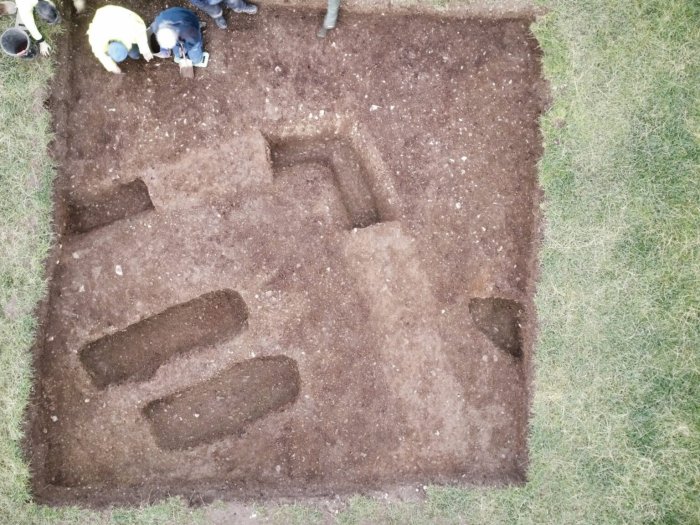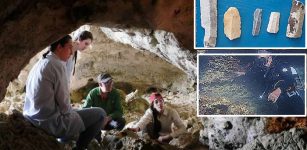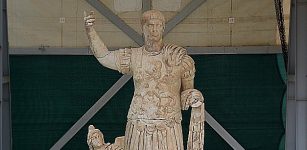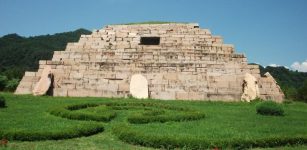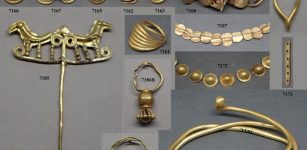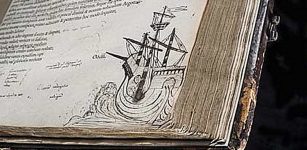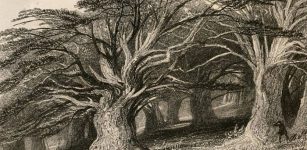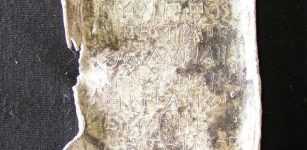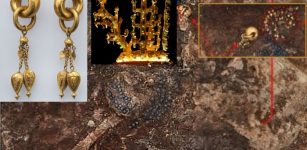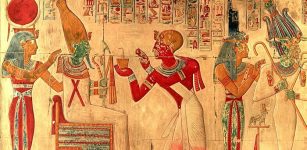Evidence Supporting Drumelzier Legend And Merlin’s Death In Scotland Uncovered By Archaeologists
Jan Bartek - AncientPages.com - The village of Drumelzier has long been associated with the legendary figure of Merlin, purportedly imprisoned, killed, and interred near the banks of the River Tweed by a Dark Age monarch. This association is primarily derived from the "Vita Merlini Sylvestris," a medieval narrative believed to have been composed in Glasgow during the twelfth century.
In 2022, a team of volunteers under the direction of GUARD Archaeology initiated an investigation into the archaeological foundations of this local legend. The recently published results of their endeavors reveal a remarkable preservation of the early medieval cultural heritage of the Britons of southern Scotland.
Reconstruction of Tinnis Fort around AD 600. Credit: illustration by Chris Mitchell
A geophysical survey identified an archaeological feature resembling a grave in close proximity to the reputed location of Merlin's burial site at Drumelzier.
Excavations at Tinnis Fort, which overlooks the purported grave site, revealed occupation during the late sixth and early seventh centuries AD, coinciding with the temporal setting of the legend. The site exhibits characteristics consistent with a lordly stronghold of that era.
Further excavations at the Thirlestane Barrows, situated across the Tweed, uncovered the addition of a square barrow to a pre-existing group of Bronze Age round barrows. This addition, dated between the late third and late sixth centuries AD, contained the interments of two individuals of exceptional elite status.
These findings do not confirm the veracity of the local legend; rather, they demonstrate that the Drumelzier narrative, which incorporates pre-Christian customs and ancient Cumbric nomenclature, is associated with local sites that archaeological evidence now suggests could have plausibly given rise to the story. It is more probable that the legend originated in Drumelzier itself, potentially as a folk memory that was embellished over centuries before disseminating widely and undergoing significant transformations.
Thirlestane Square Barrow excavation © GUARD Archaeology Ltd
The Drumelzier's Hidden Heritage project also uncovered evidence of human activity spanning multiple periods, including the Late Mesolithic/Early Neolithic, Bronze Age, Iron Age, and medieval eras, suggesting the presence of numerous local narratives beyond the Merlin legend.
Notably, a scatter of Late Mesolithic / Early Neolithic flint blade fragments was recovered from the summit of Tinnis, providing evidence of some of the earliest human presence on this prominent hill. These ancient visitors would have observed a Tweed Valley landscape markedly different from its current appearance.
Who was the real Merlin and where is he buried? Credit: Adobe Stock - byerenyerli
The vitrified ramparts at Tinnis offer evidence of a Late Iron Age hillfort's destruction, likely resulting from conflicts between powerful families vying for control and establishing early kingdoms.
In the fourteenth century, the formidable Tweedies of Drumelzier constructed a castle at Tinnis. This fortress was held on behalf of the Scottish monarchy from approximately 1366 until 1525, serving as a strategic defense against incursions from England to the south.
See also: More Archaeology News
The proximity of a square barrow to a cluster of Bronze Age round barrows at Thirlestane, despite a temporal gap of two millennia, suggests that these monuments retained significance within the cultural landscape. It is evident that the inhabitants of ancient Tweeddale maintained an awareness of their predecessors and the historical context of their surroundings. This collective memory was preserved and transmitted through the medium of local folklore, serving as a conduit for historical narratives.
It should also be added that some scholars suggested that the legendary figure of Merlin may have originated from a Celtic druid known as Lailoken. According to historical accounts, Lailoken purportedly acquired the gift of prophecy subsequent to experiencing a mental breakdown, which led to his withdrawal from society and subsequent habitation in the forest.
Furthermore, a poetic work dating from approximately 600 A.D. makes reference to a Welsh prophet bearing the name Myrddin, which may potentially be linked to the Merlin of Arthurian legend.
Written by Jan Bartek - AncientPages.com Staff Writer


